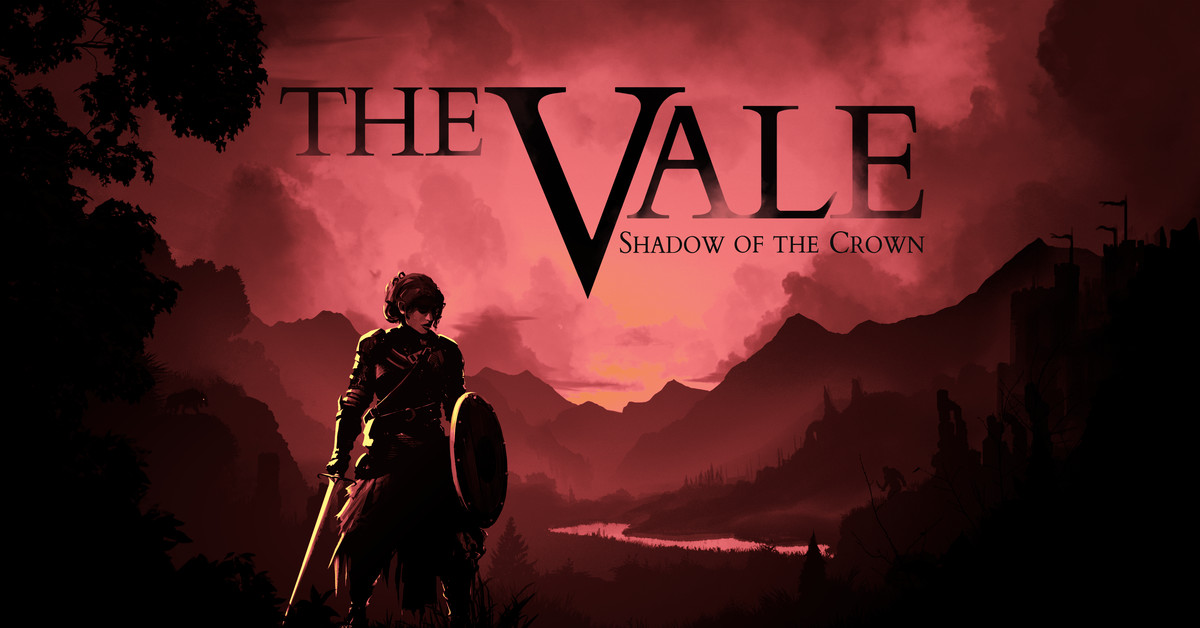The ticking time bomb of modern free-to-play games
Nintendo’s Dragalia Lost is shutting down at the end of 2022. | Photo by Amelia Holowaty Krales / The VergeWhen games like Dragalia Lost shut down for good, what happens next? Continue reading…

/cdn.vox-cdn.com/uploads/chorus_image/image/71311959/akrales_180925_2981_0006.0.jpg) Nintendo’s Dragalia Lost is shutting down at the end of 2022.Photo by Amelia Holowaty Krales / The Verge
Nintendo’s Dragalia Lost is shutting down at the end of 2022.Photo by Amelia Holowaty Krales / The Verge
When games like Dragalia Lost shut down for good, what happens next?
Dragalia Lost launched in 2018 as a statement of intent from Nintendo in partnership with Japanese developer Cygames. Nintendo may have first jumped into the field of mobile games in 2016 with the launch of games like Super Mario Run and Miitomo, but this was the first original property the company had produced exclusively for mobile devices. This free-to-play gacha game (a game whose content is generally free to access while charging microtransactions for loot boxes and randomized lotteries for rare and limited-time characters) had a flashy multi-region launch campaign collaborating with major Japanese musician DAOKO, banking on the game’s success at home and abroad.
And it was a hit. Less than a year after launch, the game had already earned over $100 million, with a steady stream of merchandise following soon after. Yet, as of last month, Nintendo and Cygames published the game’s final update, and this week, it was revealed that the game would shut down on November 29th after just three years of operation.
Without any announcement from Nintendo of an official offline version or archive to memorialize the game after servers shut down and the game is no longer accessible to the public, fans are working across the community to preserve everything they can of a game they dedicated themselves to over the last few years. “Especially with games like Dragalia Lost and games that are on a live server and stuff, once the server closes down, you can’t play that anymore,” explains Sei, an active member of the game’s community. “It’s not like you can download a ROM of a Game Boy game and play it: once it’s gone, it’s gone.”
Free-to-play games have risen from an anomaly to the most profitable sector of the games industry. In 2012, the mobile games market hit $9 billion in revenue at a time when free-to-play revenue systems were only starting to grow more popular, challenging the norm of games charging a one-time price of entry. At the same time, free-to-play revenue on PC was at an impressive $11 billion, thanks to titles like League of Legends, already eclipsing the revenue earned by premium titles. By 2020, free-to-play revenue across mobile, PC, and console accounted for over $96 billion.
Unsurprisingly, the industry has adapted to increasingly cater to players in this bustling sector. Yet, for every headline boasting of the phenomenal revenue-generating success of titles like Fortnite or Pokémon Go comes a host of titles that burn out within a year or sometimes even less. Japan is one of the biggest regions for free-to-play games, particularly on mobile, where titles like Uma Musume: Pretty Derby have broken into the top 10 highest-grossing mobile games worldwide despite only being available in a single country. Yet, even games based on major properties like Bandai Namco’s Tales of Luminaria have struggled, shutting down in under six months.
Even successful games eventually must come to an end, as seen with titles such as Kingdom Hearts χ, which closed down in 2021, six years after launching on mobile and nine years from its Japan-only browser launch. Yet, in a market increasingly dominated by these massive revenue-generating free-to-play titles, the legacy (or lack thereof) of these games is creating an ever-larger accessibility issue. Whereas it’s easy to plug in a retro console to relive nostalgic games from your childhood or discover beloved classics, always-online free-to-play titles are inaccessible the moment a developer or publisher pulls the plug.
Unless we hear otherwise in the next few months before the game’s definitive end of service, Dragalia Lost — a historically significant title with regards to Nintendo’s relationship with mobile gaming — will meet the same fate as thousands of others in the genre. Once that happens, and after all is lost, what is left of the time and money players spent in these games? Or the time spent developing games that are now impossible to play by anyone?
:no_upscale()/cdn.vox-cdn.com/uploads/chorus_asset/file/23985013/DIM_Launch_Dungeons_CavernOfEchoes_GTS_01.png) Diablo ImmortalImage: Blizzard Entertainment
Diablo ImmortalImage: Blizzard Entertainment
For as long as free-to-play games rose from an anomaly to the most lucrative sector of modern gaming, controversy has followed. Gacha mechanics and loot boxes have become a source of legislative investigation and outright bans in a number of countries, particularly in Europe, for the view these games generally earn their revenue from exploitative gambling mechanics. Although many players enjoy hundreds of hours of free content without spending a dime, stories like the player who spent $100,000 on Diablo Immortal are far from uncommon.
Admittedly, the issue of always-online games becoming inaccessible due to server closures is not a new phenomenon. As World of Warcraft rose to prominence in the 2000s, a deluge of MMOs soon followed, almost all of which have since closed down. Yet, for every unofficial server for Star Wars Galaxies, Toontown Online, and The Matrix Online, many other MMOs remain entirely inaccessible. Even then, private servers can face legal ramifications for the volunteers who attempt to revive these efforts. While similar private server efforts are, in theory, possible for mobile titles, the sheer quantity of games, as well as the need to archive regular updates and limited-time events alongside the volatile compatibility of ever-evolving mobile platforms, this becomes a near-impossible task.
As this market matures and even long-running titles are retired, the experience of such closures has led some players to reassess their relationship to the purchases they made while these games were active. Marvel Heroes was a free-to-play game released on PC in 2013 that ran until 2017 when missed updates and issues at developer Gazillion Entertainment resulted in the company’s turbulent closure and the game shutting down soon after. David LaBerge was an active player of the game from its launch and eventually spent over $1,000 on the game by the time of its closure between them and their partner.
“It was always going to be a free-to-play game, but they were offering preorder packs that included early access from the closed beta,” LaBerge says. “In our mind, spending $50 was like buying a new game. However, I can say that by the end, we both had definitely spent $1,000 between us. At the end of seeing a Marvel movie, we would go home and drop $20 each on characters and skins from the movie we just saw and grind out some action.”
Since the game’s closure, they admitted that while this wasn’t their first free-to-play title, the experience and its sudden closure did make them more skeptical of playing such games in the future. “If this was a company that was still existing, I would say when a free-to-play title is shuttered, it would be nice to at least provide consumers another one of their games of choice, the equivalent, or majority of what was spent on their now-shuttered game,” LaBerge says. “I have seen online service games come and go for years now and totally understand that my ‘investment’ into the game will not exist long-term, but as I get older, I have tightened my wallet.”
:no_upscale()/cdn.vox-cdn.com/uploads/chorus_asset/file/23985025/Screenshot_4.png) Kingdom Hearts Union χ Dark RoadImage: Square Enix
Kingdom Hearts Union χ Dark RoadImage: Square Enix
Without such an offline experience being offered, many games are entirely lost. Even those that do offer such a system are typically limited. The closure of Kingdom Hearts χ came with a movie viewer for story content, while the game’s newest additional mode story, Dark Road, has been concluded and will be playable entirely offline later this month. The gameplay of the rest of the game, however, is now completely inaccessible. Still, this offline update did also offer a way for players to view their in-game purchases for medals used in battle. Aniplex USA offered a similar offline viewer with the closure of the English version of Magia Record: Puella Magi Madoka Magica but, again, without the gameplay retained for players to revisit the experience after servers went offline.
Such updates are typically exceptions to the norm. This requires fan projects in the communities of those games facing closure to do what they can to archive their games pre-closure. Some projects, like those seen for the Japan-only puzzle game Puchiguru Love Live (based on the popular Love Live school idol franchise), have fully playable private servers that keep these games alive in as close to their active state as possible. Most simply aim to keep the memory of these games alive by recording and collecting together whatever assets and snippets of gameplay they can before servers are shut down.
An offline mode has yet to be announced by Nintendo for Dragalia Lost. So a project organized by Sei, a community member and admin of the r/Dragalia Lost Discord server, with the support of the rest of the community, is attempting to archive the game they love, which may become the only way for these players and curious outsiders to revisit the game years into the future. Their project aims to rescue story content and past events through video archives while data mining the application in order to save assets, scripts, and side content in all languages. Yet even with a large number of volunteers, it remains a race against time.
“The more active contributors have done a lot more than me,” Sei explains. “People have been recording the stories in different languages, and you have the different text and voice language combinations, too. There’s a difference between reading a script and actually seeing it play out, so that’s why we’re trying to do all the recording. But there’s so much gameplay, so many characters, so many side stories, so much to memorialize. I think a lot of people in the community of Dragalia Lost don’t want it lost to time. This was a part of our lives. Maybe it could be part of someone else’s life, maybe someone who wasn’t even born yet.”
At this point in time, much of the story has already been archived in at least English and Japanese, but many other languages and side content are yet to be recorded beyond assets ripped from the game’s files. But even with archives, these are merely visual memorials to a game that is soon to be lost.
Players within the Dragalia Lost community are mixed on the idea of losing the money and time invested in these games. While some don’t regret their time or money spent, their feelings toward the genre have changed alongside this news. This is the case for Natalie, who spent 15 hours a week and over $200 on the game over its lifespan. “I will not spend any money on another gacha game and have sworn off free-to-play live services like Dragalia Lost,” Natalie explains. “I do not want to get invested in another title that will be taken away from me once the development cost and opportunity cost become too high to justify keeping the servers running.”
Others were less remorseful of their investments — even knowing that they will soon disappear forever. “I do not regret the money and time I spent within the game,” explained another player, Shiro. “The game has given me many memories to look back on, such as the times spent crouched over my laptop trying to get my alliance members together to challenge the new boss.”
:no_upscale()/cdn.vox-cdn.com/uploads/chorus_asset/file/23318508/akrales_220314_5071_0193.jpg) Genshin ImpactPhoto by Amelia Holowaty Krales / The Verge
Genshin ImpactPhoto by Amelia Holowaty Krales / The Verge
It’s an issue that’s only going to become more important to a growing number of players as time goes on. What will happen to the millions of players who bought skins in Fortnite or rolled for new characters in Genshin Impact once servers for both of those titles inevitably close down at some point in the future? Will there be any ability for players to retain access to their items or replay the game in 20 years’ time? The fact that prior incarnations of the Fortnite map updated between seasons are already lost would suggest otherwise.
Examples like these will only grow in years to come, with billions in player spending, years of development time, and thousands of hours of player engagement being lost on a yearly basis. While our perception of the games industry and its evolution has traditionally been shaped by headline-grabbing premium experiences, it’s free-to-play and gacha games that top the charts of the most successful titles of the last decade. As things stand, the lack of software preservation in the sector is resulting in history-defining artifacts of gaming, both large and small, being lost. And who’s to say if a fan archive is secure when a cease and desist could cause even that to be lost forever?
“Software preservation, in general, is a thing that, as a society, we’re kind of losing sight of,” stated Sei. “Because a lot of things are just services now, once they’re gone, they’re gone. Even if you don’t find much value in them personally, there might be value in someone 10, 20, 30 years from now looking back on things and seeing how it was. If it’s not preserved, then that’s just a part of history that’s gone.”
Players will have their memories, and fan communities can do what they can to keep these memories alive. Some fans of Dragalia Lost are working on fan fiction to tie up loose ends or fan art that expresses their love for the experience. But while memories will remain, the experiences of developers and players won’t. A book isn’t gone once it goes out of print, but a free-to-play game is the moment the cost of upkeep becomes too high. Thanks for the memories, Dragalia Lost. But memory alone is a fickle thing, isn’t it?

 Fransebas
Fransebas 
































